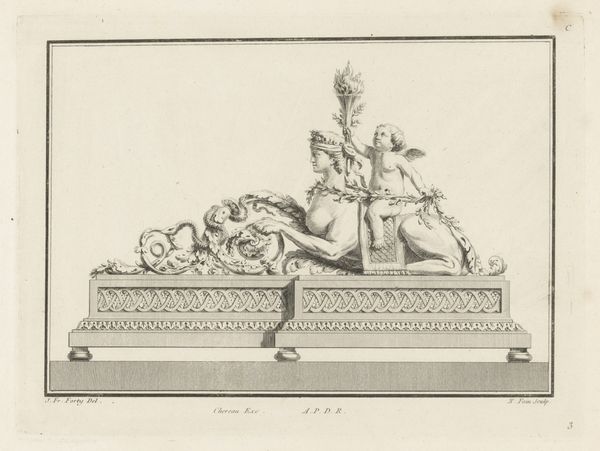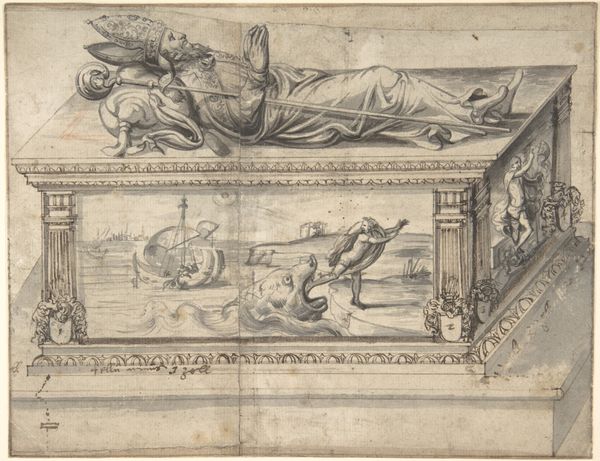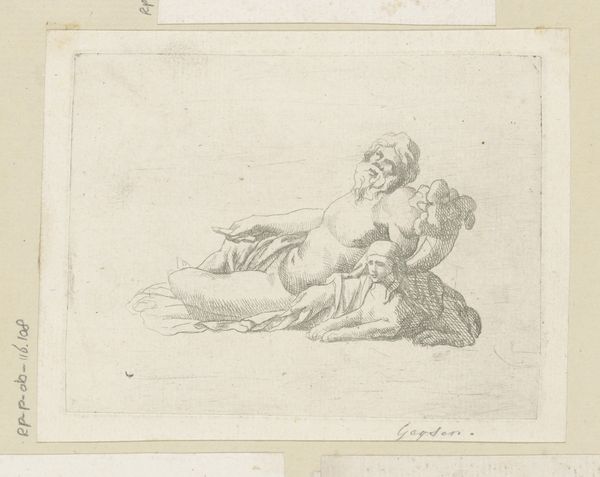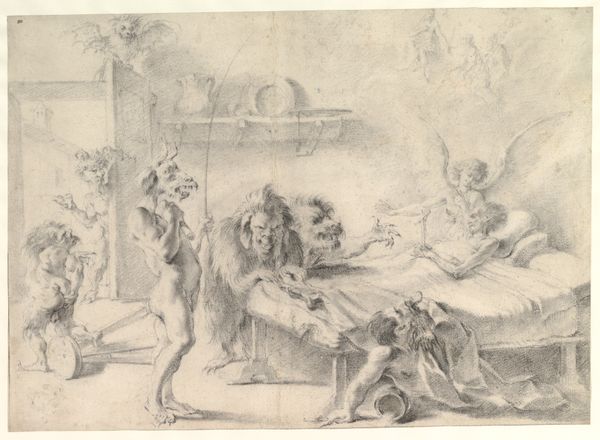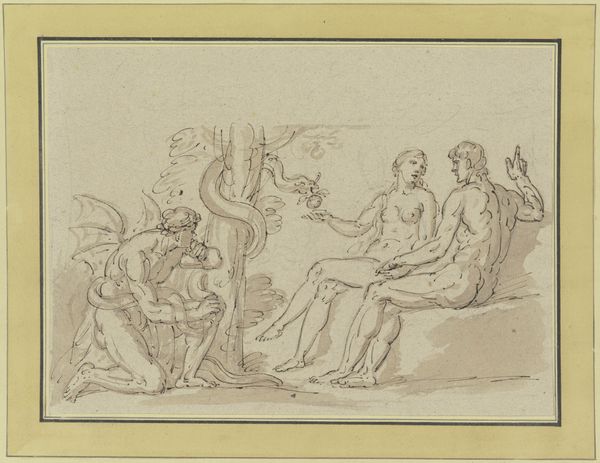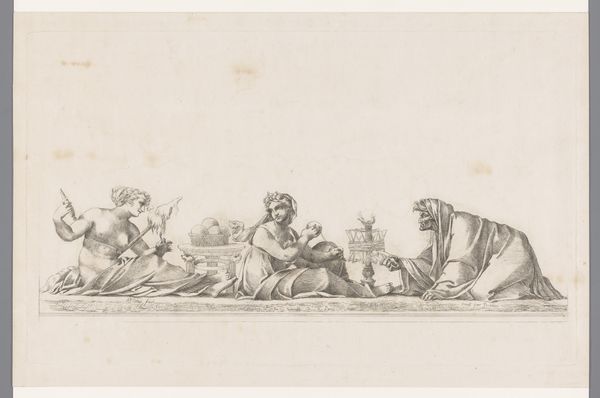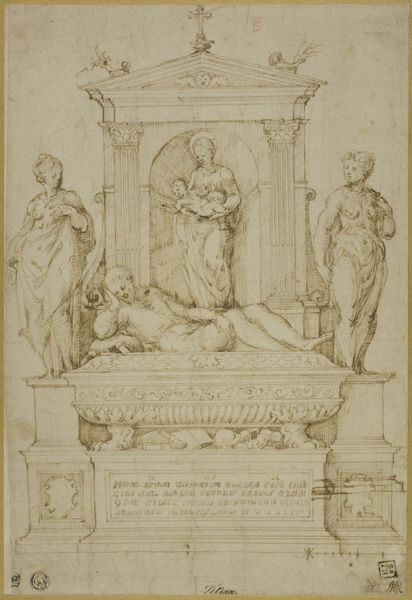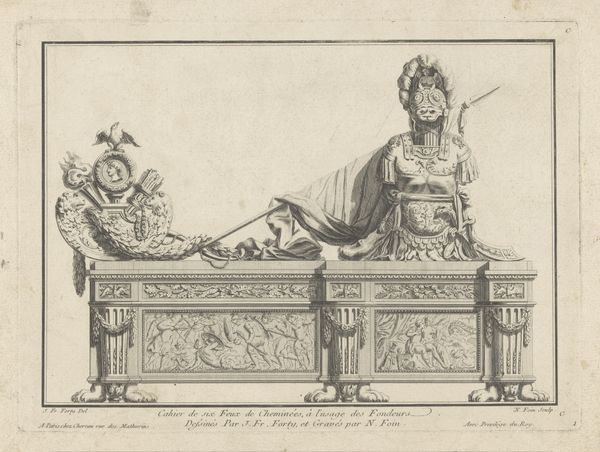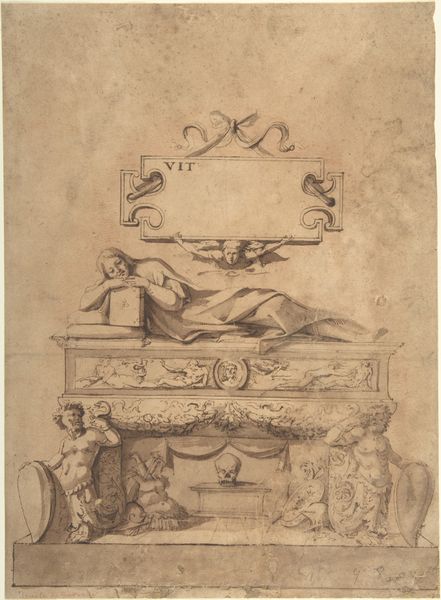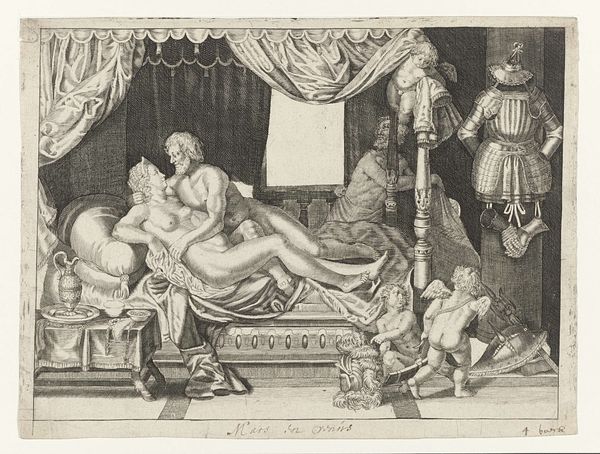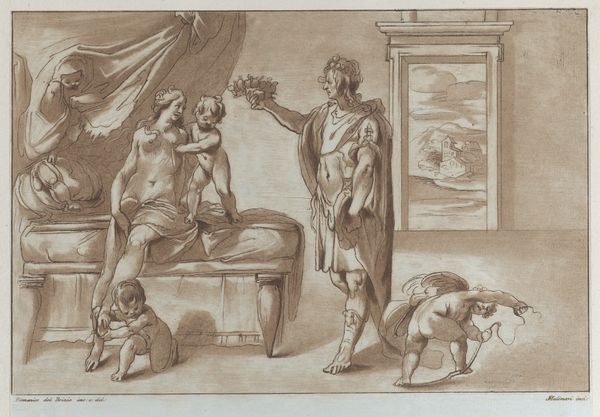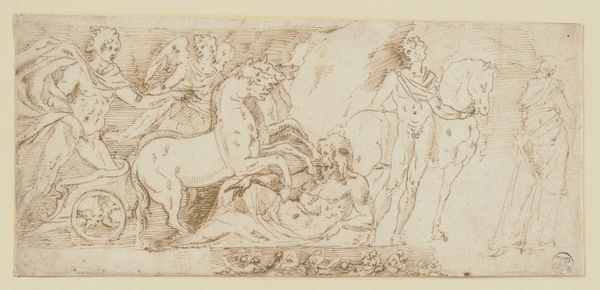
drawing, graphite
#
drawing
#
allegory
#
figuration
#
11_renaissance
#
geometric
#
graphite
#
history-painting
#
academic-art
Dimensions: sheet: 5 3/8 x 7 11/16 in. (13.7 x 19.5 cm)
Copyright: Public Domain
Curator: Hans Krumpper's "Allegory of Geometry," dating roughly from 1570 to 1643, presents a fascinating look into Renaissance ideals of knowledge. It’s currently held at the Metropolitan Museum of Art. Editor: It feels like a carefully staged drama, but everything's rendered with such precision in graphite on paper, you really see the labor involved. It also shows us the understructure or potential blueprints, if you will, for some sculpture or an architectural construction, don’t you think? Curator: Absolutely. We have a classical female figure representing Geometry, reclining with a globe. The globe grounds the universal idea of geometry to, essentially, earth-work and geographic space. She's accompanied by a cherubic figure using drafting tools. Editor: Note the visual emphasis here on the globe, its positioning right behind the nude figure, practically hugging it. Its shaded form, as well as other graphic flourishes throughout the drawing, make me wonder how many assistants were employed at his workshop? Or, even whether this might have been sketched for practice and sale as one of many similar drawings? Curator: It certainly raises the question of artistic labor. The presence of the cherub could symbolize inspiration and the transmission of knowledge, maybe a subtle statement of divine sanction? Throughout the Renaissance, the use of classical figures served as symbols of enduring knowledge, lending an aura of timelessness to intellectual pursuits. Editor: True, this aesthetic and composition is designed for conveying permanence. Also interesting that geometry, for Krumpper, is both a theoretical system and embodied practice—in its physical realization, something quite separate and less permanent from the timeless "knowledge" you are hinting at. What about that smaller sketch in the corner over on the side. It appears as a discrete ornament or elevation, doesn’t it? Curator: That certainly feels like a design element to be inserted into a larger work. This really does provide insights into Krumpper’s artistic and intellectual process. Editor: Exactly. We’ve peered into the artistic processes and the materials involved in conveying these weighty concepts through sculpture and architecture.
Comments
No comments
Be the first to comment and join the conversation on the ultimate creative platform.
